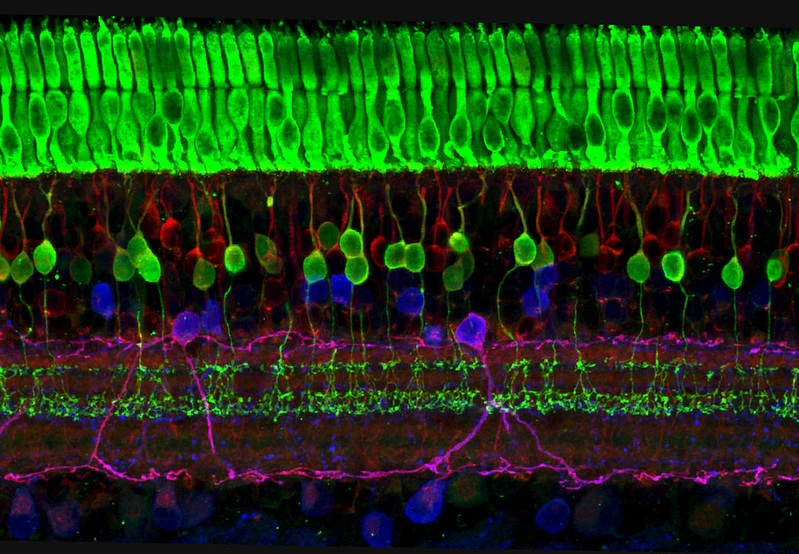
Many sensory declines come along with aging, one of much concern being sight. That being said, there is a need for much more research on the visual changes associated with such aging. Specifically, the changes of rod bipolar cells and their ribbon synapses due to aging are an area of interest, along with the complex calcium systems at work. Using a zebrafish model, peptides help determine the effects of aging on vision and the retina.
TAMRA-RBP peptides tag rod bipolar cells
Zebrafish were used for this experiment thanks to their unique roles as model organisms; they share 70% genomic similarity with humans, and their short lifespan offers the chance to study life cycles in a few short years while still comparable to human aging over decades. Researchers compared data between middle-aged (MA, 18-months-old) and older-aged (OA, 36-months-old) zebrafish, equating to human ages of approximately 38 and 75 years of age, respectively. Using TAMRA ribbon-binding peptides from LifeTein, the team was able to observe changes between the two ages of zebrafish.
What was discovered was a decreased number of synaptic ribbons and increased ribbon length in the OA models. Further, there were many alterations to the local calcium dynamics of the system, implying a more complex change to vision deterioration than initially expected. The model shows how subtle changes could have vast implications for disease models where these alterations may be amplified, and surely sheds more light on how human vision may decline with age.
Abhishek P Shrestha, Nirujan Rameshkumar, Johane Martins Boff, Rhea Rajmanna, Thadshayini Chandrasegaran, Frederick E Courtney, David Zenisek, Thirumalini Vaithianathan
bioRxiv 2023.09.01.555825; doi: https://doi.org/10.1101/2023.09.01.555825